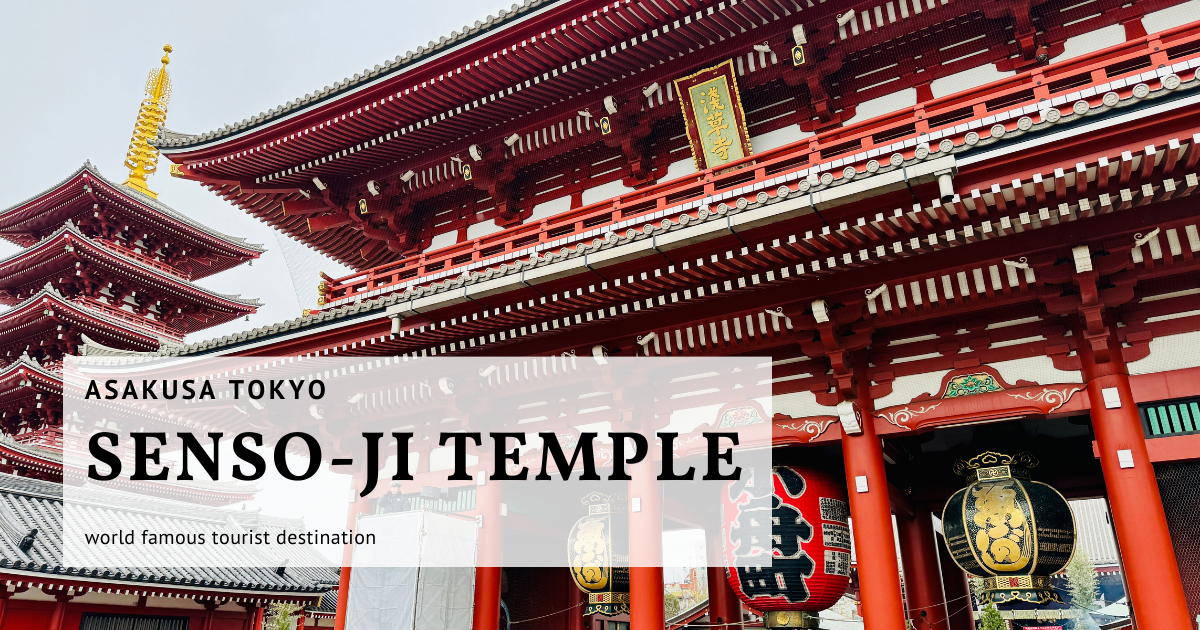Sensoji Temple

Sensoji Temple, located in Asakusa, Taito City, Tokyo, is one of Japan’s most renowned and historically significant Buddhist temples. Its official name is “Kinryuzan Sensoji.”
As one of the oldest temples in Japan, it traces its origins to the year 628, when two fishermen, Hinokuma Hamanari and Takenari, discovered a statue of Kannon in the Sumida River.
Sensoji was established in 645 and became a vital protector of Edo during the Edo period. The current main hall, reconstructed after wartime destruction, was completed in 1958.
- Business hours
- [April to September] 6:00 am AM – 5:00 am PM
- [October to March] 6:30 am AM – 5:00 am PM
- Regular holiday
- Open year - round
- Telephone number
- +081-3-3842-0181
- Official site
- https://www.senso - ji.jp
- How to visit
- 2 - minute walk from Asakusa Station Exit 3
- Address
- 2 - 3-1 Asakusa, Taito - ku, Tokyo 111 - 0032
Parking Information
Sensoji Temple does not have its own parking facilities. Visitors are encouraged to use nearby coin-operated parking lots. The Kaminarimon Underground Parking Lot is a popular choice for Sensoji visitors due to its proximity.
| Hours of Operation | 7:00 am AM – 11:00 am PM Overnight parking is possible, but entry and exit are not allowed outside of operating hours. |
|---|---|
| Holidays | Open year - round |
| Parking Capacity | 197 spaces |
| Vehicle Size Restrictions | Vehicles must not exceed 5.3m in length, 2.0m in width, or 2.1m in height. |
| Parking Fees | 200 yen for the first 30 minutes, then 100 yen per 15 minutes Weekday daytime rates are capped for affordability (2,400 yen for 6 to 12 hours). |
| Location | 2 - 12 - 18 Kaminarimon, Taito - ku, Tokyo 111 - 0034 |
Kaminarimon Gate
The most iconic feature of Sensoji Temple is the Kaminarimon Gate. Its official name is “Fujin Raijin-mon,” a striking vermillion wooden structure standing 25 meters tall and 14 meters wide.

The massive red lantern hanging at Kaminarimon is 3.9 meters tall, 3.3 meters wide, and weighs approximately 700 kilograms, making it an unforgettable symbol of Asakusa and the temple’s entrance.

Although the gate was destroyed by fire in 1865, it was rebuilt in 1960 with the support of Panasonic founder Konosuke Matsushita.

Kaminarimon, serving as Sensoji’s main gate, is protected by statues of Fujin (the wind god) and Raijin (the thunder god). These deities are believed to safeguard visitors as they enter.
Nakamise Street
Nakamise Street is a lively 250-meter shopping street that connects the Kaminarimon Gate to Sensoji’s main hall. It is lined with souvenir shops and food vendors, bustling with activity throughout the year, especially during the New Year’s season.

This historical shopping street has been a part of Asakusa’s culture since the Edo period.

Traditional Japanese sweets, pressed flower crafts, fans, and yukatas are just some of the items you can find here. It’s the perfect spot for shopping and enjoying street food.



The New Year’s crowds make Nakamise Street the busiest of the year, creating a vibrant and joyful atmosphere.

The positive energy of the crowd makes the experience enjoyable rather than stressful.

Hozomon Gate

The Hozomon Gate stands before Sensoji’s main hall. At 31 meters tall, this grand wooden gate features a roof constructed with 500 cypress shingles from Chiba Prefecture.

Hozomon marks the transition from Nakamise Street to the temple grounds, symbolizing a shift from bustling commerce to serene worship.



The original gate was built in 942, with the current structure rebuilt in 1964.


Main Hall
The main hall of Sensoji is the heart of the temple, housing a sacred statue of Kannon. Standing 33 meters tall, it is a place of deep reverence.

Visitors offer prayers, light incense, and purchase omamori (charms) for blessings.
Traditional Yet Modern Architecture

The current main hall, rebuilt in 1958, features traditional architectural styles with modern materials like reinforced concrete and titanium roof tiles for durability and safety.

During New Year’s, visitors may need to queue for 20–30 minutes to enter the main hall, but the festive atmosphere makes the wait enjoyable.
Sensoji During New Year’s: A Peak Celebration

Sensoji is a globally famous attraction, drawing visitors year-round. New Year’s, particularly early January, sees the temple at its liveliest.




The bustling Nakamise Street and vibrant food stalls in the temple grounds create a festival-like atmosphere.



Sensoji is close to Tokyo Skytree, making it a great combination for sightseeing.

Experience Japanese tradition and history by visiting Sensoji, especially during the New Year’s season.
